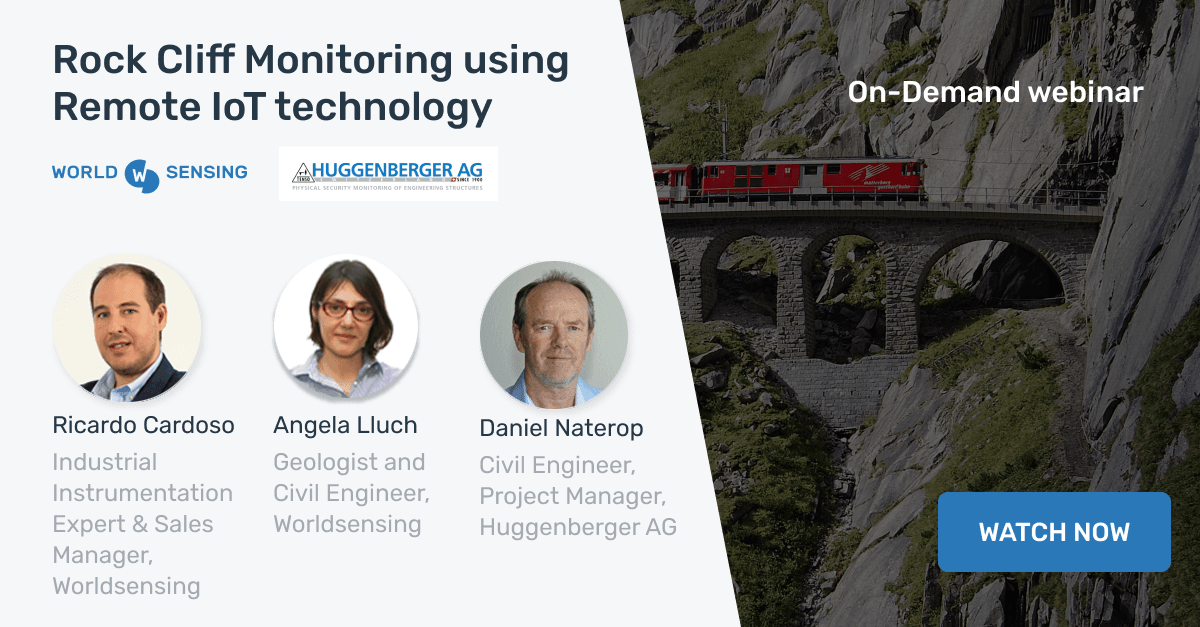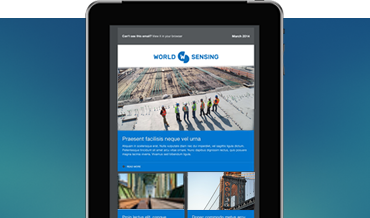Rock cliff monitoring using remote IoT technology solutions by Worldsensing
Landslides and rockfalls are a common hazard in mountainous regions, often triggered by rainfall, earthquakes and human activity. Yet rock cliff monitoring is tricky for a range of reasons, said Arnau Carbonell, Worldsensing Sales Area Manager, in a Worldsensing webinar featuring the specialist geotechnical engineering firm Huggenberger. Rock cliff monitoring challenges include:
- The need to monitor numerous data points manually or using other complex and often costly approaches.
- The risks faced by monitoring teams, assets and equipment in reaching remote, hard-to-access locations.
- The changes that can occur on the monitoring site due to evolving environmental and weather conditions.
- The difficulty in aggregating and processing data that is often messy and fragmented.
Remote monitoring can help address these challenges by minimizing the need for in-person data collection and equipment maintenance, providing regular, real-time data, tracking the causes as well as the effects of ground movement and issuing alarms if measurements exceed a given threshold. Current network technologies for rock cliff monitoring are usually based on local area networks such as ZigBee, cellular technology such as 4G or low power, wide area network systems such as the LoRa protocol used by Worldsensing.
LoRa for rock cliff monitoring
“LoRa is a long-range, low-power wireless platform that has become the de-facto technology for Internet of Things [IoT] networks worldwide,” said Carbonell. “It has the advantage of using unlicensed frequencies, meaning that you can freely make private deployments without any prior authorization or paying a fee to use the radiofrequency. These characteristics make it particularly well suited for remote monitoring applications.”
Worldsensing equipment is deployed in a star network topology and can connect to sensors from a wide range of vendors. Based on a poll carried out in the webinar, most geotechnical engineering firms use in-place instrumentation for rock cliff monitoring, although geodetic instruments such as total stations are also favored.
In-place instrumentation such as load cells can easily be connected to Worldsensing’s data loggers, which can be configured in the field using a mobile app, said Worldsensing Application Engineer Angela Lluch Gracia in the webinar. The output from load cells can be digital or analog, she said. Worldsensing offers data loggers with up to five channels for the connection of multiple load cells.

